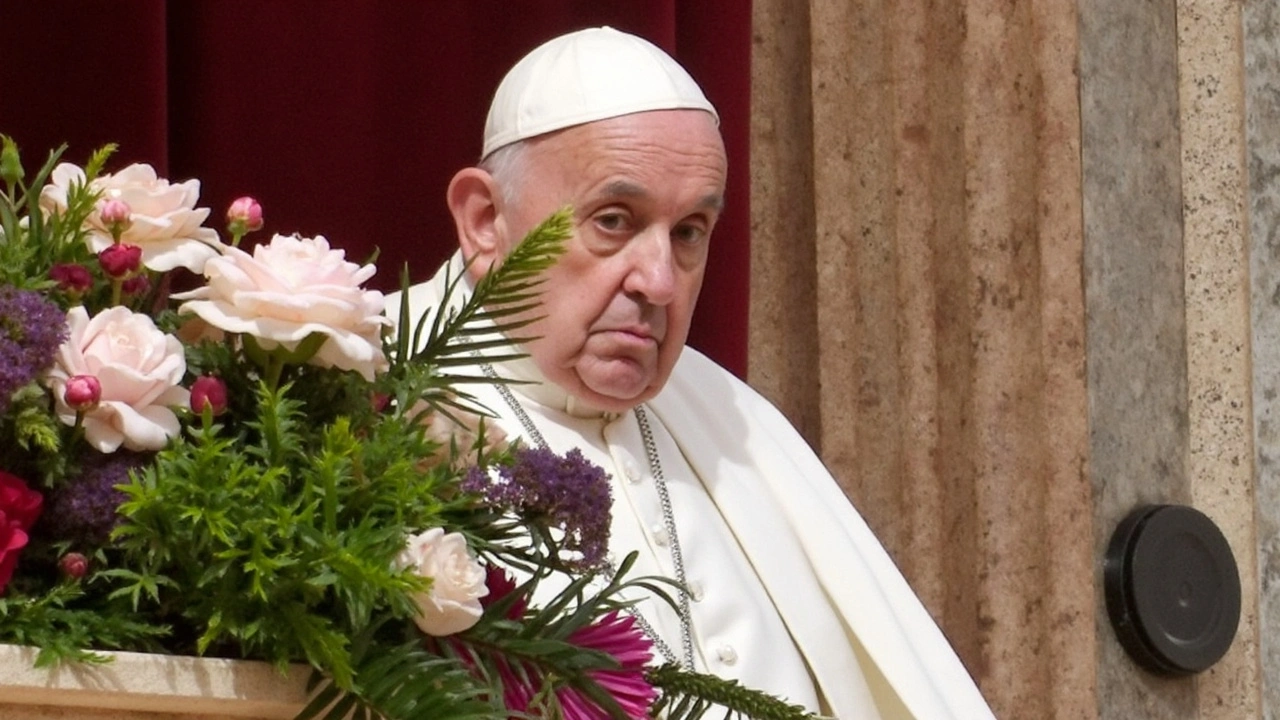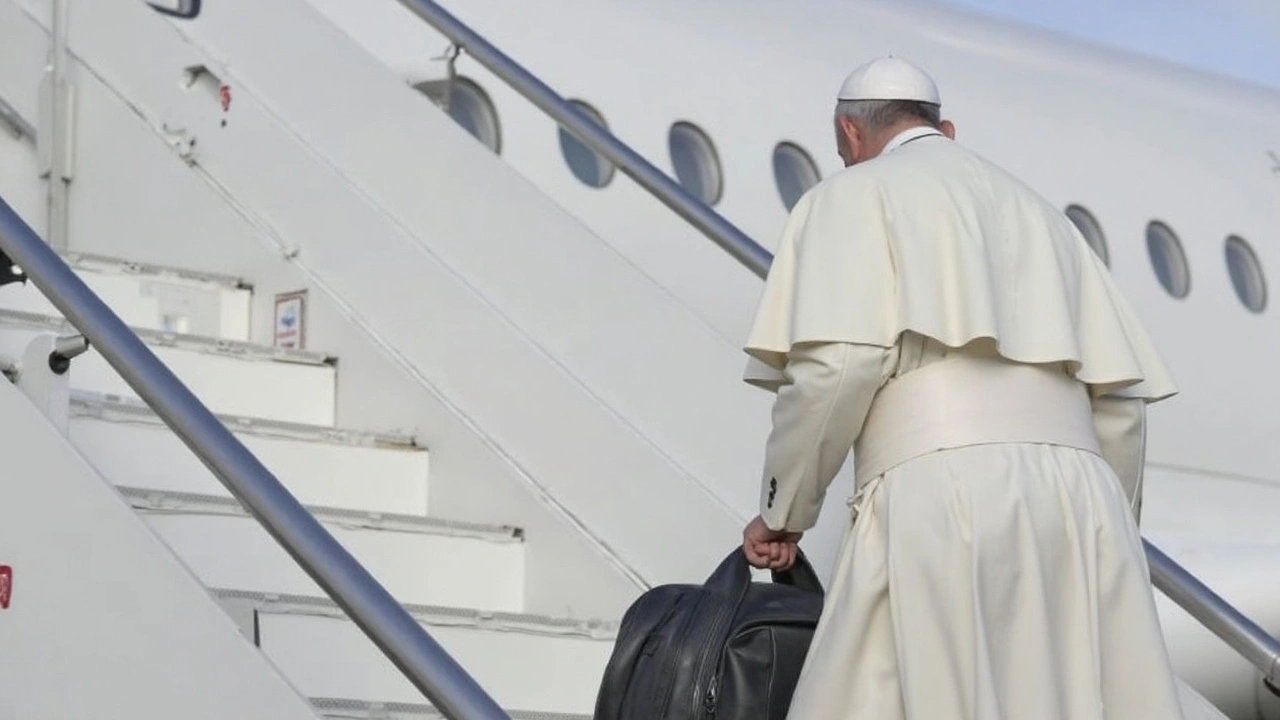Pope Francis on the Move: More Than Just Visits
It’s hard to think of a pope in recent memory who has put as many miles under his feet as Pope Francis. Since 2013, he’s basically redefined what it means to be a ‘pilgrim pope’—turning official trips into moments that shake up old routines and spark new conversations around the planet. His nine major apostolic journeys aren’t about grand gestures or pageantry. They’re about sitting with people, listening, and acting as a bridge between cultures, faiths, and even centuries-old wounds.
His very first trip—straight to Rio de Janeiro for the famous 2013 World Youth Day—kind of set the tone. You had more than three million people packed along Copacabana Beach and other iconic spots, all soaking up his blend of humility and high-energy faith. What stuck with folks wasn’t just the scale. It was Francis jumping off script, hugging strangers, and wading right into local issues. That knack for getting personal would set the stage for everything else he’d do outside Vatican walls.
Fast forward to 2014, and Pope Francis was on a sensitive mission across the Holy Land. He didn’t just stick to tourist stops—he sought out Ecumenical Patriarch Bartholomew to mark 50 years since a legendary meeting between their predecessors. The real headline, though? Francis invited Palestinian leader Mahmoud Abbas and Israeli President Shimon Peres to pray together at the Vatican. While world leaders talk peace all the time, inviting them to Vatican gardens put hope right in the spotlight and showed what the ‘Francis approach’ looks like: less formality, plenty of guts.

Unity, Reconciliation, and Real Change
A big piece of his mission has been shining a light on places and people who rarely get it. In 2021, Francis visited Cyprus, the ancient island that St. Paul and St. Barnabas once evangelized. It’s not just about history, though. Cyprus is divided, with deep wounds. By showing up, Francis pulled those old Christian roots into present day, reminding everyone what unity could look like—even in tough places.
But perhaps nowhere was the pope’s hands-on approach clearer than his 2022 trip to Canada. The country’s residential schools had left deep scars among Indigenous folk—First Nations, Métis, and Inuit families who endured decades of cultural erasure and abuse. Francis’ meetings in places like Maskwacis and Lac Ste. Anne weren’t just photo-ops. He listened, apologized, and stressed healing, facing Canada’s troubled history head-on. Plenty of church leaders talk about reconciliation. Francis sat and shared tears with families who’d lost so much. For many, that was a new kind of papal closeness.
Wherever he goes, the pope puts unity and reconciliation front and center. You see it in his willingness to meet Orthodox leaders in Jerusalem, break bread with Muslim and Jewish leaders, or stand beside indigenous communities still struggling for justice. His real trademark is how he spotlights the very people most on the outside—whether because of faith, ethnicity, or painful history.
It’s no accident that words like ecumenism, social justice, and solidarity keep coming up in any stop on his schedule. He’s turned every trip into a chance to spark dialogue, bridge divides, and—most importantly—connect face-to-face with those who usually don’t get a seat at history’s table. Francis brings an all-in, practical faith to every border he crosses, reminding both church insiders and outsiders that the real story happens where people hurt and hope at the same time.

mary oconnell
April 22, 2025 AT 00:13Oh, look-another pontifical passport stamp, because the world was obviously starved of papal Instagram stories. The sheer velocity of Francisco's itineraries reads like a case study in strategic pontifical mobility, a sort of "soft power hyperloop" that compresses centuries of theological discourse into a 48‑hour press conference. One could argue that each apostolic journey functions as a micro‑ecosystem of ecumenical diplomacy, where the Pope leverages social capital to recalibrate interfaith geopolitics. He doesn’t just travel; he orchestrates a transnational symposium of solidarity, an intercultural praxis that makes UN summits look like playground tea parties. The Rio Youth Day stop was less about surf culture and more about deploying sacramental narrative as a meme‑driven catalyst for millennial engagement. By hugging strangers in Copacabana, he turned the act into a semiotic rupture, challenging the hegemonic liturgical choreography that has dominated Vatican protocol for centuries. In Jerusalem, the garden prayer session was a performative act of conflict resolution, a quasi‑ritual that re‑encoded diplomatic symbolism into the very soil of contested holy sites. Cyprus, the divided island, became a live laboratory for ecclesial reconciliation, where the Pope’s presence acted as a catalytic variable in a complex equation of national identity and theological memory. Canada’s residential school apologies were not merely pastoral gestures; they were a concrete manifestation of restorative justice theory applied in real time, a praxis that forces ecclesiastical institutions to confront systemic trauma. Every stop is a node in a global network of moral economies, where the currency is empathy and the exchange rate is measured in tears, handshakes, and institutional reforms. One could even model his itinerary using game theory, where each diplomatic encounter alters the payoff matrix for religious actors worldwide. The confluence of humility and high‑energy evangelism creates a paradoxical brand identity that the Vatican can monetize in soft power terms. So, while the headlines love a good photo‑op, the underlying infrastructure is a sophisticated lattice of narrative engineering, designed to rewire collective consciousness. In short, Pope Francis isn’t just on the move; he’s reconfiguring the very topology of global spirituality, one airport lounge at a time.
Michael Laffitte
April 22, 2025 AT 01:36Man, reading about the Pope’s road‑trip saga feels like watching a blockbuster where the hero swaps a cape for a humble pair of shoes. I love how every destination becomes a stage for genuine connection, not just a photo‑op. The way he sat with Indigenous families in Canada was pure theatre of compassion, and it hit me right in the feels. It’s like he’s saying “I’m here, we’re together”, and that’s the kind of collaborative spirit we need on a global scale. The diplomatic tightrope in Jerusalem? Pure drama, with the Pope walking that line like a seasoned actor. I’m all for this kind of high‑stakes, heart‑driven outreach-it’s exactly the kind of narrative that can shift world attitudes. Props to the Holy See for finally putting a real human face on the papacy.
sahil jain
April 22, 2025 AT 02:10Totally feel you on the blockbuster vibe-I think the Pope’s approach actually reboots the narrative template for religious leadership. The blend of humility and headline‑making is a delicate balance, but it’s paying off in terms of public awareness. Seeing him break bread with diverse communities really underscores the universal appeal of shared values 😊. It’s also a reminder that genuine dialogue can cut through political noise and foster real understanding. The momentum from these visits could spark long‑term grassroots movements, which is exactly what an energetic motivator like us wants to see.
Bruce Moncrieff
April 22, 2025 AT 03:00The Pope's itineraries are basically the Vatican's version of a reality show
Dee Boyd
April 22, 2025 AT 04:23While your reductionist analogy might amuse casual observers, it grossly trivializes the profound ecclesiological significance embedded in each apostolic excursion. The pontifical praxis operates within a complex matrix of sacramental diplomacy, cultural inculturation, and moral theology that transcends mere spectacle. By framing these sacred pilgrimages as “reality TV,” you undermine the ontological gravitas of the Church’s mission to promulgate the common good. Such lexical casualization erodes the epistemic integrity of theological discourse, fostering a secularist complacency that is antithetical to authentic faith praxis. It is incumbent upon informed interlocutors to articulate the nuanced symbiosis between liturgical symbolism and geopolitical agency inherent in these voyages. Therefore, a more rigorous hermeneutic should replace flippant pop‑culture comparisons, lest we dilute the transformative potential of papal outreach.